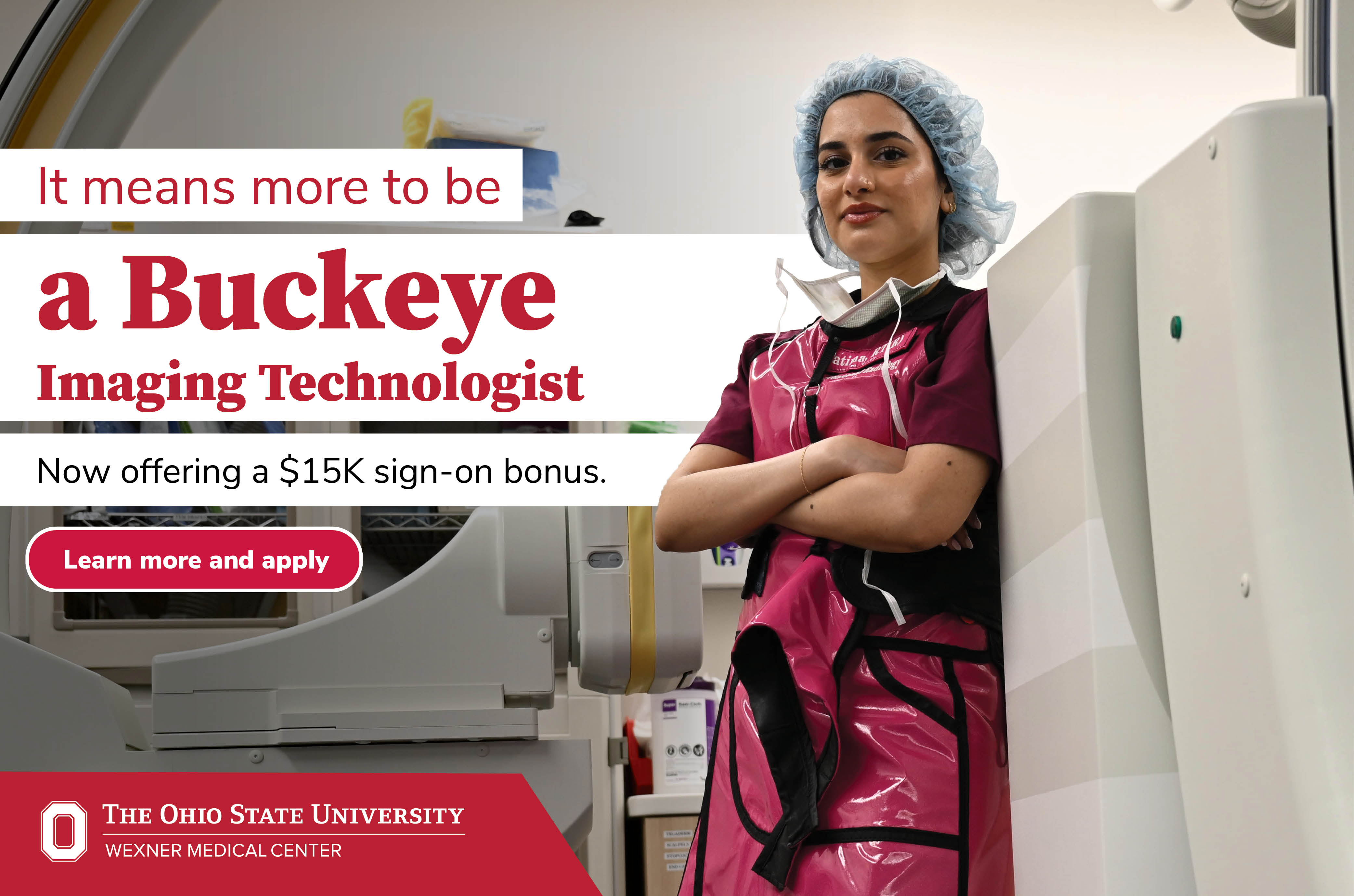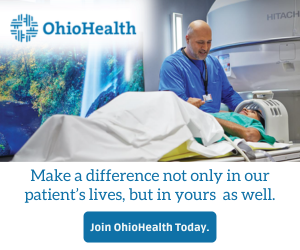Welcome to the Advocacy Committee section of the OSRT website. We are always looking for fellow technologists to serve on our committee. If you are interested in volunteering, contact the This email address is being protected from spambots. You need JavaScript enabled to view it..
The Advocacy Committee serves several purposes for the OSRT and technologists in Ohio. We:
- take the OSRT’s position on all proposed legislation/regulation and practice issues pertinent to the profession,
- advocate for federal minimum standard legislation,
- maintain contact with key state and national representatives on all activities pertinent to the profession,
- monitor the Ohio Medical Board and send representatives when issues impact our profession,
- provide testimony as needed on proposed legislation/regulation and practice issues pertinent to the profession,
- represent Ohio technologists at ODH Bureau of Envvironmental and Radiation Protection meetings pertinent to our practice,
- interact with the ODH on revisions to the Ohio Administrative rules relative to the practice of radiology, and
- collaborate with OSRT's legislative adviser who activley networks and monitors all legislative activities at the State Capitol.
Some of our interactions with the Ohio Department of Health include attending RAC, REC, and Radioactive Materials Committee meetings. Upcoming meetings can be found on the Calendar.
The Radiation Advisory Council (RAC) was established in accordance with section 3748.20 of the Ohio Revised Code. Members of the Radiation Advisory Council are appointed by the governor for five year terms.
Duties of the council include:
- advising and consulting with the director on the development of rules.
- advising and consulting with the director concerning the administration, implementation and enforcement of Chapter 3748 of the Ohio Revised Code.
- advising and consulting with the director in the development of inspection criteria, procedures and guidelines to be used in the radiation control program.
The council establishes committees to focus on specific components of the radiation control program and the rules developed in accordance with Chapter 3748 of the Ohio Revised Code.
There are currently two committees: the Radiation-Generating Equipment Committee (REC) and the Radioactive Materials Committee.For questions related to advocacy and health policy issues, contact OSRT's This email address is being protected from spambots. You need JavaScript enabled to view it..

In radiation protection rules adopted under Chapter 3748 of the Ohio Revised Code, the Ohio Department of Health has
established standards for protection of employees from radiation sources that are required to be licensed/registered with the Ohio
Department of Health.

Recently the Bureau of Radiation Protection has been contacted regarding the use of x-rays in human research. Be aware that the Ohio Administrative Code (OAC) does not allow for any person to be “exposed to the useful beam except the patient for dental or medical radiologic procedures and unless such exposure has been authorized by a licensed practitioner within his or her scope of practice.” SeeOAC rule 3701:1-66-02(B)
Questions regarding rule 3701:1-66-02 or the prohibition of exposing a person to x-rays within authorization from a licensed practitioner should be directed to This email address is being protected from spambots. You need JavaScript enabled to view it., Chief, Bureau of Radiation Protection, Ohio Department of Health.

You can either print the document, or download to a diskette. Steps 1- 8 are the same steps you would use for printing.
- Go To ODH Website
- Click on Health Rules Laws & Forms
- Click on Draft Rules
- Scroll to Chapter to be saved or printed. Click on the Chapter number to open the table of contents.
- Rules are in .PDF format. Download the most current version (version 6.0) of Adobe Acrobat reader, if necessary.
- Click on rule number you wish to save or print.
- The rule opens as a PDF document.
- Insert a diskette in your computer (or PRINT).
- On the toolbar directly above the document, click the icon that looks like a diskette.
- Name the file to be saved.
- Save the file to the diskette; the saved document is a read-only.
If you require further assistance in downloading ODH rules, phone 614-644-2727.
Bureau of Radiation Protection
Ohio Dept. of Health
P.O. Box 118
Columbus, OH 43216-0118
614-644-2727
This email address is being protected from spambots. You need JavaScript enabled to view it.

Did you know that for nearly the past 40 years, the OSRT has been fighting for medical imaging professionals in Ohio? The work of the OSRT for advocacy began in the early 1980s through its work on creating a licensure law for Ohio radiologic technologists. Finally, in 1995, the OSRT won the fight for licensure for medical imaging professionals; without licensure, anyone with little to no training would be legally permitted to perform radiologic procedures. Ohio licensure ensures quality medical imaging procedures and superior patient care for ohio consumer patients. A state without licensure opens the door to anyone with little or no training to perform medical imaging procedures, which can increase health care costs, and decrease quality patient care.
The OSRT did not stop their advocacy efforts once they won the fight for licensure; they continued. In 1999-2000, Cardiovascular technologists (RCIS and CVT) tried to introduce a bill, rewriting licensing statutes in Ohio allowing them to perform intravascular cardiac procedures under direct supervision of a physician. Upon learning of the potential threat to the licensure statutes, the OSRT mounted a potent offense and provided multiple testimonies at legislative hearings opposing the proposed bill. Due to the efforts of OSRT and other oppossing partners, this legislation never passed.
In 2002, the U.S. Government developed tand created the Watchdogged Task Force on Workforce Shortage. The appointed task force's charge was to identify fields of praactice with shortages of personnel. As medical imaging was one of the fields identified by the taskforce, they could change the scope of practice so that other non-medical imaging professionals could perform medical imaging procedures. OSRT contended that having other disciplines assume the radiologic technologist's scope of practice would lead to decreased images quality and woudl be detrimental to quality of patient care. OSRT continuously monitored legislation pertinent to medical imaging. The proposed law that woudl extend the scope of practice permission to perform medical imaging procedures was denied to anyone who was not licensed.
In around 2007, the OSRT worked with the legislature to develop the Radiologist Assistant Bill, and worked to ensure the oversight of that credential was through the Ohio Medical Board and not the Ohio Dept of Health.
While continually monitoring licensure laws, the OSRT also keeps a very close watch on other health care professionals encroaching into the profession of medical imaging. In 2009 a bill was introduced (by AORN) allowing a circulating nurse to be assigned to each procedure performed in an operating room or invasive procedure room. The circulating nurse would have direct supervision control of anyone who assists in any intraoperative task. The bill appeared to place the nurse, as the radiographer's direct supervisor, in an interventional room, cardiac catheterization, or operating room. The OSRT provided opposition to this bill, and it ultimately died. Shortly after, the nursing board and the Board of Pharmacy introduced initial legislation regarding the administration of contrast media. The proposed rules excluded the radiographers' scope of practice. With the administration of contrast media with CT and MRI exams, the radiographer's legal ability to do this was in question. The OSRT worked to introduce language in the statute (ORC) and the rules (OAC) that expressly permits the radiographer in the admionistration of contrast media
Every five years, The Ohio Department of Health and Radiation Generating Committee (REC), which includes several OSRT members, sits and reviews licensure laws. The active participation on this committee by the OSRT allows imaging professionals the assurance that OSRT will protect licensure in the State of Ohio. This means OSRT is actively protecting the employment of over 6500 imaging professionals in the state.
This is one of the primary reasons Ohio medical imaging technologists and radiation therapists ought to support OSRT through active membership. While many of the actions described here are due to many volunteers, OSRT also has a paid, contracted Legislative Advisor (Lobbyist) who helps direct the efforts of monitoring and acting on behalf of OSRT. Help OSRT by becoming a member, so that OSRT can continue to help you!




